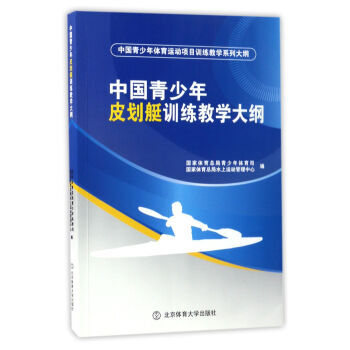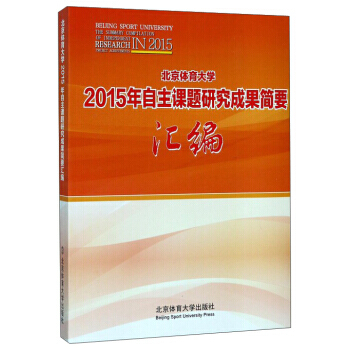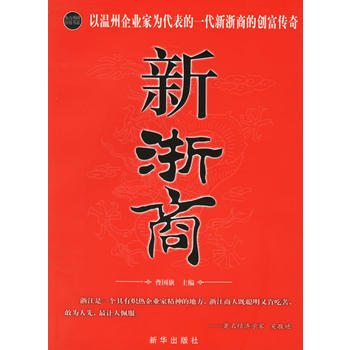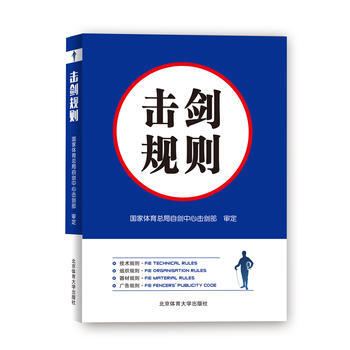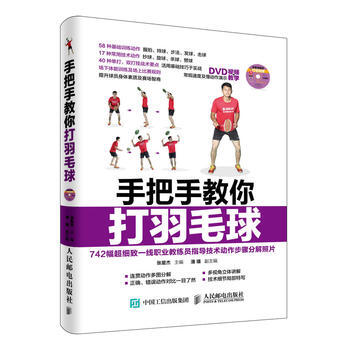具体描述
| 图书基本信息 |
| 图书名称 | 农村体育场地供需矛盾与有效供给研究 |
| 作者 | 张玲燕,孔庆波 |
| 定价 | 35.00元 |
| 出版社 | 北京体育大学出版社 |
| ISBN | 9787564424411 |
| 出版日期 | 2016-11-01 |
| 字数 | |
| 页码 | 191 |
| 版次 | 1 |
| 装帧 | 平装 |
| 开本 | 16开 |
| 商品重量 | 0.4Kg |
| 内容简介 |
| 《农村体育场地供需矛盾与有效供给研究》针对农村体育场地现状、经济学视角下农民体育健身与消费行为分析、体育认知视角下农民体育健身行为分析、农村体育文化建设中传统体育文化价值挖掘、现代体育与农村体育的现代化发展等方面的问题进行了深入的调查、研究与分析,其研究结果具有的参考价值。 |
| 作者简介 |
| 孔庆波,教育学博士,重庆文理学院体育科学发展研究所所长。主要研究方向为体育管理学、体育教育学。现主持国家社会科学基金项目1项、教育部人文社会科学规划基金项目1项、重庆市体育局科研项目1项、重庆市职业教育学会项目1项,人才引进项目1项,校级教学质量工程重点项目1项。曾主持国家社会科学基金项目2项和省部级项目4项、参与国家社会科学基金项目2项、参与其他省部级项目多项。在《北京体育大学学报》《体育学刊》《西安体育学院学报》等体育类核心期刊发表论文20余篇,省级期刊论文多篇。 |
rural sports facility supply and demand imbalance and research on effective supply Sports facilities are the material basis for sports activities and the important carriers of sports culture. They not only directly affect people's participation in sports, but also reflect the level of sports development and the quality of life of residents in a region. In recent years, with the continuous deepening of rural revitalization and the increasing awareness of people's health, the demand for sports facilities in rural areas has been growing rapidly. However, the current supply of rural sports facilities is far from meeting the growing demand, and the contradiction between supply and demand has become increasingly prominent. This is not only a challenge to the healthy development of rural sports, but also a significant obstacle to the improvement of rural residents' physical and mental health and quality of life. Therefore, understanding and analyzing the contradiction between the supply and demand of rural sports facilities, and exploring effective supply strategies, has become an urgent and important task. This research focuses on the rural sports facility supply and demand contradiction and the research on effective supply. It aims to deeply investigate the current situation and characteristics of the supply and demand of sports facilities in rural areas, identify the root causes of the supply and demand contradiction, and explore feasible and effective strategies for improving the supply of rural sports facilities. I. The Current Situation and Characteristics of Rural Sports Facility Supply and Demand 1. Demand Side Analysis: Growing and Diversified Demand: With the improvement of living standards and the popularization of sports concepts, rural residents' demand for sports facilities is no longer limited to basic venues for traditional sports. There is a growing demand for more diverse, specialized, and high-quality sports facilities, such as fitness equipment, basketball courts, badminton courts, football fields, and even specialized venues for niche sports like yoga or Tai Chi. This diversification reflects the increasing pursuit of a healthy and fulfilling lifestyle in rural areas. Regional Differences in Demand: The demand for sports facilities varies significantly across different rural regions. Factors such as population density, economic development level, local culture, and geographical environment all contribute to these differences. For instance, more densely populated areas generally have higher demand, while economically developed regions may exhibit a greater demand for more advanced and specialized facilities. Age and Group-Specific Demand: Different age groups and social groups have distinct demands for sports facilities. Children and adolescents require safe and engaging facilities for physical education and extracurricular activities. Young adults and middle-aged individuals often seek venues for recreational sports and fitness. Elderly residents, on the other hand, may prefer accessible and low-impact facilities for health maintenance and social interaction. Seasonal and Temporal Variations in Demand: The demand for sports facilities also exhibits seasonal and temporal fluctuations. Outdoor facilities are heavily influenced by weather conditions, with higher demand during favorable seasons. Indoor facilities, however, can cater to year-round demand. Furthermore, peak demand often occurs during evenings and weekends when residents have more leisure time. Unmet Demand and Dissatisfaction: Despite the growing demand, a significant portion of the rural population experiences unmet demand for sports facilities. This can manifest as a lack of available venues, poor quality of existing facilities, inconvenient locations, or prohibitive costs of access. This unmet demand leads to dissatisfaction and can discourage participation in physical activities. 2. Supply Side Analysis: Inadequate Quantity and Insufficient Variety: In many rural areas, the overall quantity of sports facilities is insufficient to meet the growing demand. Furthermore, the variety of facilities often lags behind the diversifying needs of the population, with a prevalence of basic and outdated facilities. Specialized venues for emerging sports or modern fitness activities are particularly scarce. Uneven Distribution and Accessibility Issues: The distribution of sports facilities in rural areas is often uneven. Some villages or townships may have relatively good facilities, while others, especially remote or economically disadvantaged ones, may lack any sports infrastructure. This uneven distribution creates significant accessibility issues, making it difficult for many residents to conveniently access sports venues. Poor Quality and Maintenance: A significant portion of existing rural sports facilities suffer from poor quality of construction and inadequate maintenance. This can lead to safety hazards, reduced usability, and a negative user experience. Lack of regular upkeep and repair further exacerbates these issues, diminishing the lifespan and effectiveness of the facilities. Limited Funding and Investment: The development of rural sports facilities is often constrained by limited funding. Local government budgets are often stretched thin, and private sector investment in rural sports infrastructure is generally low. This lack of financial resources hinders both the construction of new facilities and the upgrading and maintenance of existing ones. Lack of Professional Management and Operation: Many rural sports facilities lack professional management and operational expertise. This can result in inefficient use of resources, poor service quality, and a lack of responsiveness to community needs. Management may be informal, relying on volunteers, which can be unsustainable and inconsistent. Policy and Planning Gaps: While national and provincial policies may advocate for the development of rural sports, the translation of these policies into concrete local action plans and implementation strategies is often lacking. There can be a disconnect between top-level directives and on-the-ground realities, leading to a lack of targeted and effective planning for sports facility development. II. Causes of the Contradiction Between Supply and Demand The prominent contradiction between the supply and demand of rural sports facilities stems from a complex interplay of interconnected factors: Economic Development Level: The overall economic development level of a region directly impacts its capacity to invest in and maintain sports facilities. Less developed rural areas often face significant financial constraints, limiting their ability to provide adequate sports infrastructure. Urban-Rural Disparity: Historically, investment in public services, including sports facilities, has been heavily skewed towards urban areas. This urban-rural disparity has resulted in a significant deficit in rural sports infrastructure, which continues to be a challenge to overcome. Population Mobility and Demographic Changes: Rural depopulation, particularly among younger generations, can lead to a decreased demand for certain types of facilities in specific locations. Conversely, in some rapidly developing rural areas with returning migrant workers or an influx of new residents, the demand can outpace existing supply. Awareness and Prioritization: In some rural communities, there may be a lower level of awareness regarding the importance of sports and physical activity for health and well-being. Consequently, the development of sports facilities may not be a high priority for local governments or residents compared to other pressing needs. Land Use and Planning Challenges: Acquiring suitable land for sports facilities in rural areas can be challenging due to competing land use demands for agriculture, housing, and other development projects. Inefficient land use planning and a lack of dedicated allocation for sports purposes further exacerbate this issue. Fragmented Governance and Coordination Issues: The responsibility for developing and managing rural sports facilities often falls under multiple government departments and local authorities. A lack of effective coordination and communication among these entities can lead to duplicated efforts, inefficient resource allocation, and a piecemeal approach to facility development. Lack of Community Engagement and Ownership: Insufficient engagement of local communities in the planning, construction, and management of sports facilities can lead to a disconnect between the facilities provided and the actual needs and preferences of the residents. A lack of community ownership can also result in poor maintenance and underutilization of facilities. Technological Backwardness and Information Asymmetry: The adoption of modern technologies in sports facility design, construction, and management is often slower in rural areas. Furthermore, there can be an information asymmetry regarding best practices, funding opportunities, and successful models of facility development. III. Research on Effective Supply Strategies for Rural Sports Facilities Addressing the contradiction between supply and demand requires a multi-pronged approach that focuses on enhancing the effectiveness and sustainability of sports facility supply in rural areas. This research explores several key strategies: 1. Innovative Funding Models and Investment Mechanisms: Public-Private Partnerships (PPPs): Encouraging collaborations between government entities and private enterprises to fund, build, and operate sports facilities. This can leverage private capital and expertise while ensuring public access and benefit. Social Capital Mobilization: Exploring avenues for community fundraising, crowdfunding, and leveraging local business sponsorship to supplement public funding. Empowering local communities to contribute to the financial resources for facility development. Diversified Revenue Streams: Developing income-generating mechanisms for sports facilities, such as charging reasonable usage fees (with provisions for free or subsidized access for specific groups), organizing events, offering sports training programs, and renting out facilities for various activities. Government Support and Subsidies: Advocating for increased government investment in rural sports infrastructure, including targeted subsidies, grants, and preferential policies for rural sports facility development. Exploration of Rural Revitalization Funds: Effectively integrating sports facility development into broader rural revitalization plans and accessing relevant funding streams. 2. Rational Planning and Resource Optimization: Needs-Based Planning: Conducting thorough assessments of local community needs and preferences before planning and developing any sports facilities. This ensures that the facilities provided are relevant and will be utilized. Integrated Planning with Other Rural Development Initiatives: Aligning sports facility development with broader rural infrastructure projects, such as village beautification, community center construction, and environmental improvement projects, to maximize resource efficiency and synergistic benefits. Multi-functional Facility Design: Designing sports facilities that can serve multiple purposes and be used for a variety of activities, thereby maximizing their utility and catering to diverse needs. For example, a multi-purpose hall could host sports, cultural events, and community gatherings. Leveraging Existing Infrastructure: Identifying and repurposing underutilized existing structures or open spaces within rural communities for sports activities, rather than always building new. Promoting Shared Facilities: Encouraging the development of shared sports facilities among neighboring villages or townships to reduce redundancy and optimize resource allocation. 3. Enhancing Facility Quality and Management: Adopting Standardized Construction and Design: Implementing national or industry standards for the construction and design of sports facilities to ensure safety, durability, and functionality. Prioritizing Maintenance and Upkeep: Establishing dedicated maintenance budgets and schedules for all sports facilities to ensure their long-term usability and prevent deterioration. Training local personnel in basic maintenance techniques. Professional Management and Operation Models: Exploring different management models, including direct government management, outsourcing to professional management companies, or community-based management, to ensure efficient and effective operation of facilities. Digitalization and Smart Management: Utilizing technology for facility booking, management, and data analysis to improve operational efficiency and user experience. Quality Control and Feedback Mechanisms: Implementing quality control measures during construction and operation, and establishing feedback channels for users to report issues and provide suggestions for improvement. 4. Strengthening Community Engagement and Participation: Participatory Planning Processes: Actively involving local residents, sports enthusiasts, and community leaders in the planning, design, and even construction phases of sports facilities. Volunteer Programs and Community Ownership: Encouraging the development of volunteer programs for facility maintenance, event organization, and program delivery, fostering a sense of community ownership and responsibility. Promoting Sports Culture and Awareness: Organizing sports events, training sessions, and health promotion activities to raise awareness about the benefits of physical activity and encourage active participation. Empowering Local Sports Organizations: Supporting and strengthening local sports clubs and associations, as they can play a crucial role in organizing activities, managing facilities, and representing the interests of users. 5. Policy Support and Inter-Agency Coordination: Developing Targeted Rural Sports Policies: Advocating for specific policies and action plans at national, provincial, and local levels that prioritize the development of rural sports facilities and address the unique challenges faced by rural areas. Strengthening Inter-Agency Coordination: Enhancing collaboration and coordination among relevant government departments (e.g., sports, education, health, rural affairs, finance) to ensure a coherent and integrated approach to rural sports facility development. Data Collection and Research: Establishing robust systems for collecting data on rural sports facility supply and demand, and conducting ongoing research to inform policy decisions and guide future development. Knowledge Sharing and Capacity Building: Facilitating the exchange of best practices, innovative ideas, and technical expertise among different rural regions and stakeholders. Providing training and capacity-building opportunities for local officials and community members involved in sports facility development and management. By systematically investigating the current situation, analyzing the root causes of the supply-demand contradiction, and exploring these effective supply strategies, this research aims to provide valuable insights and practical recommendations for improving the availability, accessibility, and quality of sports facilities in rural areas, ultimately contributing to the enhancement of rural residents' health, well-being, and overall quality of life, and fostering a more vibrant and active rural society.





